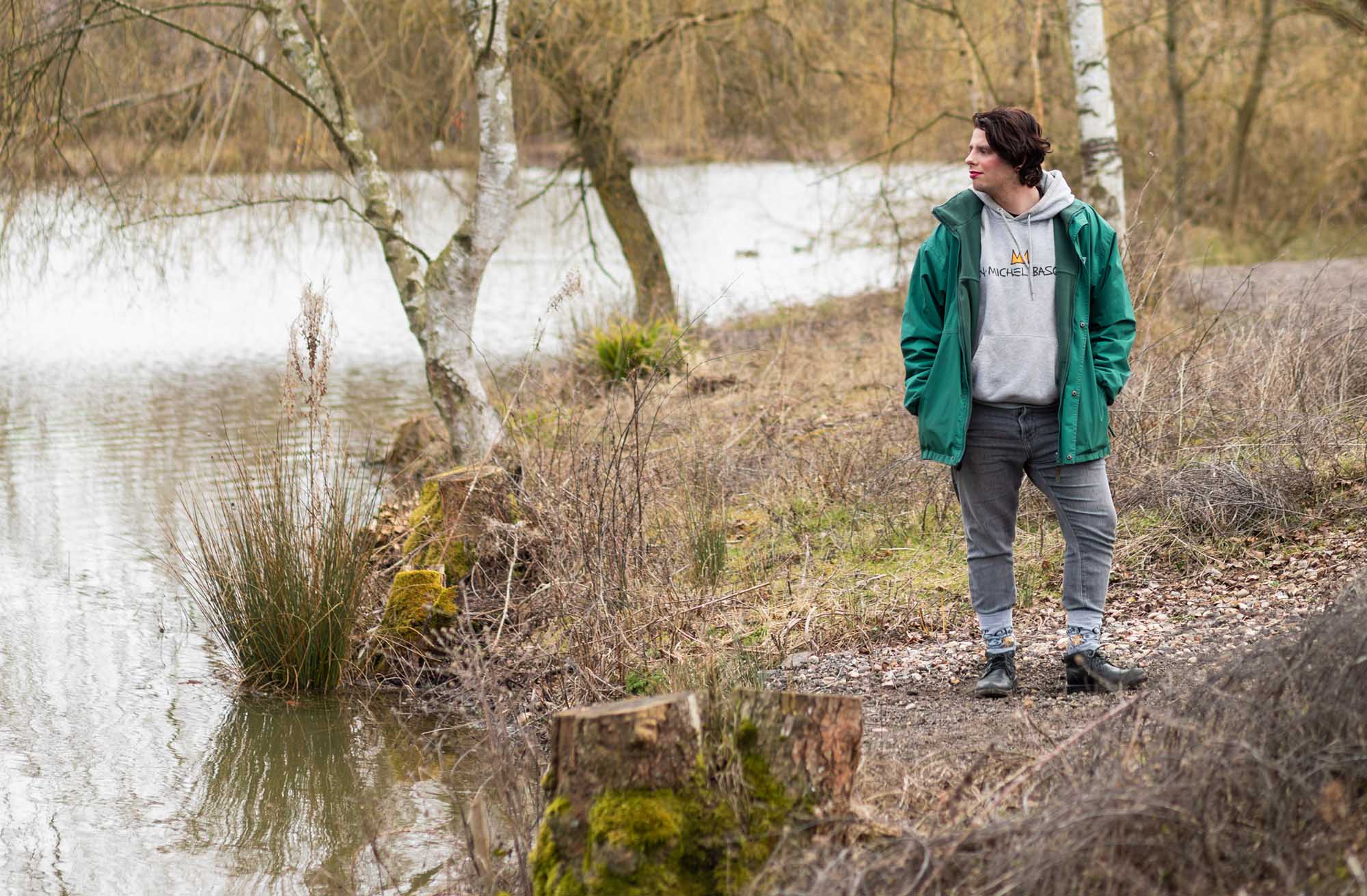
Words by Ellie Broughton
Photography by Jayne Lloyd
A short drive outside of the sleepy Kent village of East Farleigh – over its medieval bridges and past its 16th-century pub – lies a little farmhouse in the neighbouring village, West Farleigh. Beside an ash wood, donkeys bray in the paddocks beside guinea pig hutches, and on a clear day visitors can see for miles across the garden of England.
It’s here that a local charity, Dandelion Time, holds its headquarters, and where CEO Graham Carpenter and Director of Therapy and Training Carol Bridges work. Their mission is to support children and families with the help of nature and play.
Carol worked in nursing, midwifery and health visiting before training as a counsellor and joining the team. “When I was health visiting, we had a psychologist who taught us how to do what they would call ‘listening visits’. I remember beginning to feel that I could do more than just listen,” she says.
In 2023/24, Dandelion Time worked with 197 children aged 6-14, up 22% on the year before, seeing each for up to 12 weeks. Many of the young attendees have experienced abuse, trauma or neglect: 56% had experienced four or more Adverse Childhood Experiences (ACEs).
The team works with just three or four families at a time, with the support of both practitioners and volunteers. After coming to Dandelion Time, 85% of children reported improved self-esteem, 83% reported improved resilience, and 59% recorded improved engagement at school.
Graham had been working in landscape construction. On a site visit, he came across a gardening charity that worked with adults with chronic conditions – one of the frontrunners in the UK’s garden therapy movement. He joined the charity as a gardener, and has since trained as a counsellor and taken up his current role in leadership at the charity.
Their beautiful woodland site, along with their approach to change and growth, is key to their results, Graham tells me. “What happens in nature is vital, and not just to our well-being,” he says, “without the involvement of any therapists. If children and their carers can go out and spend time in the woodland or spend time just being in nature, then there’s a truly therapeutic experience to be had.”
For example, Carol says, having open space allows children and young people to express how they’re feeling outside of the confines of the consulting room, classroom or hospital ward. “A lot of the children who come to us, can get triggered,” she explains. “We have quite a lot of what we call ‘runners’, so we’ve built the site so that if children leave the barn, the space in front of them invites them to run to our land, which is quite extensive.”
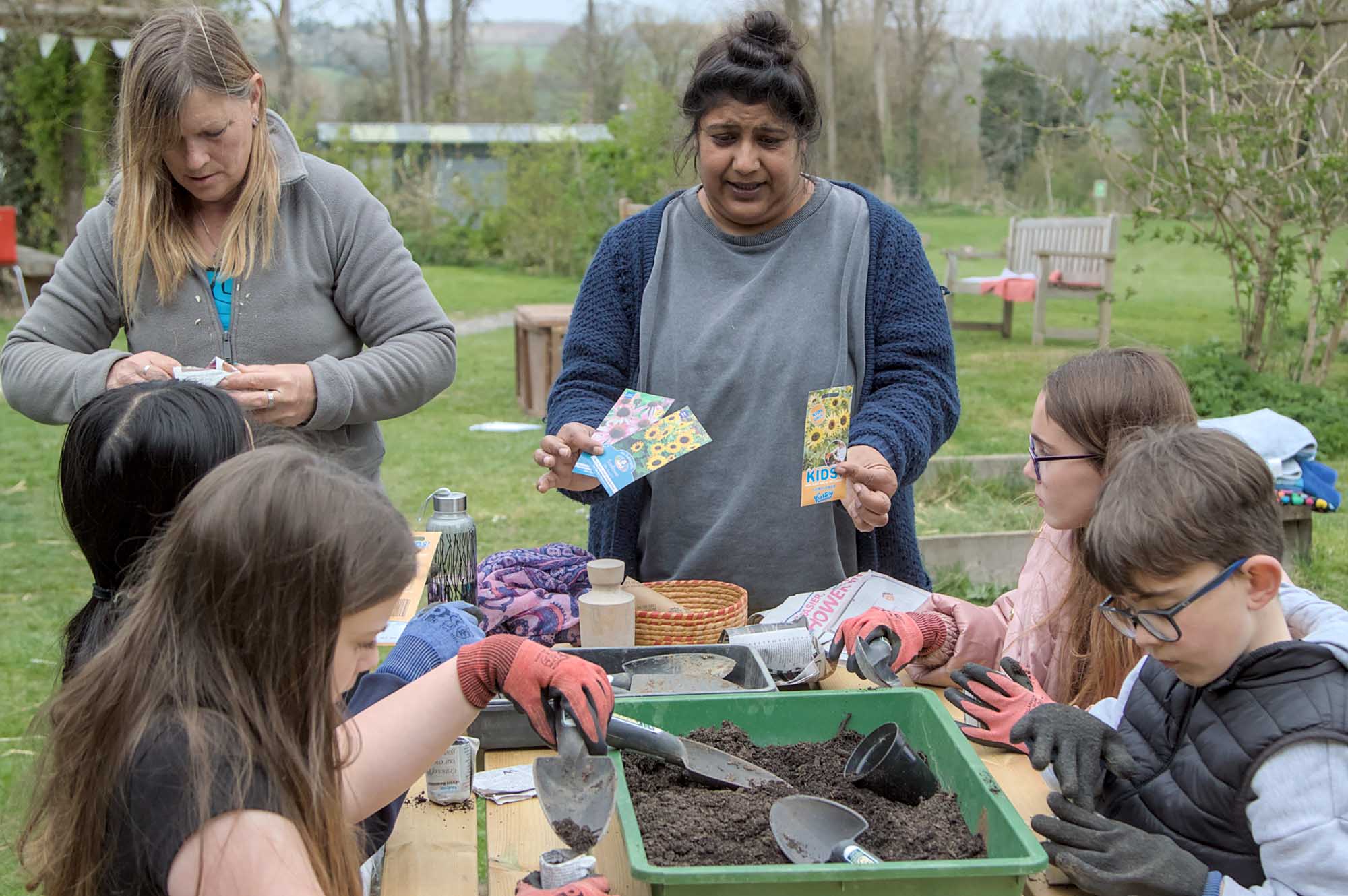 Seed planting with children at Dandelion Time
Seed planting with children at Dandelion Time
“What we know about children who run is that they tend to run to the edge of being out of sight. The site gives them an opportunity to be able to express themselves, and to start to regulate themselves.”
The evidence for the use of nature in psychotherapy is small but growing. UK researchers were conducting long-term research into horticulture therapy from as early as 2002. In the US in 2004, researchers found some evidence that green outdoor settings reduce ADHD symptoms in a small study. Another small study – this one from Canada in 2012 – found that nature had a positive effect on the cognition and affect of participants with depression. In 2023 a systematic review of 92 randomised controlled trials, published in The Lancet, found significant reductions in depression and anxiety scores following ‘nature prescriptions’.
Growing evidence has led to positive policy changes. In 2021, the government launched a Green Social Prescribing programme with £5.77m funding across seven sites in England. Last year researchers reported that participants’ happiness, anxiety, life satisfaction, and feeling that their life was worthwhile had typically improved to the national average after taking part. Plus, green social prescribing was much more cost-effective compared with other interventions, including cognitive behavioural therapy.
As practitioners will tell you, there is a profound need for new funding, services and therapeutic approaches. Families the Dandelion Time team work with are often still living with the legacy of Covid-19 and lockdowns, and Graham notes that even in 2025, parents report to him that their children haven’t been back to school since lockdown.
“If you looked at us 10 years ago,” he says, “many of the children who are referred to Dandelion Time were excluded from school. That’s gone plummeting down. It’s now the kids who are not attending a school who are referred.”
“If children and their carers can go out and spend time in the woodland or spend time just being in nature, then there’s a truly therapeutic experience to be had.”
“Many children, I think, are still in their bedrooms and it is very difficult to get them out,” Carol says. “But the ability to make friends, be in a group, and interact: all those things really matter. In that respect, we’re like a halfway house between home and school.”
Faced with this crisis, Dandelion Time has expanded its impact by offering training with and through schools, taking visits from small groups of children who have experienced ACEs. Schools are the main referrer for the charity, followed by GPs, CAMHS (Child and Adolescent Mental Health Services), and social services; at the time of writing, there was no systemic therapy available through local NHS services. The charity also provides psychoeducation for teachers and assistants on attachment and trauma-informed communication skills, so that more local children can benefit from its expertise even when they can’t visit. The charity is now almost a year into its five-year plan for 2024-29, and wants to expand its programme across Kent. Leaders also plan to promote the Dandelion Time approach amongst practitioners at a national level.
Few of these objectives would be possible without the support of Dandelion Time’s volunteers and donors. The charity has a huge pool of volunteers – 100, at the last count. Grants made up just under half of the charity’s income in 2023, but local donations (26% of total income) were also a testament to outsider support for their mission.
“Dandelion Time is quite different from what you might experience generally, out in the world,” Carol says. “The world can be quite a harsh, judgmental place. Here, we try hard to be aware of our judgments, which, of course, we all have, and be welcoming. That way, we can try to help everybody who comes here to feel safe and nurtured and contained.”
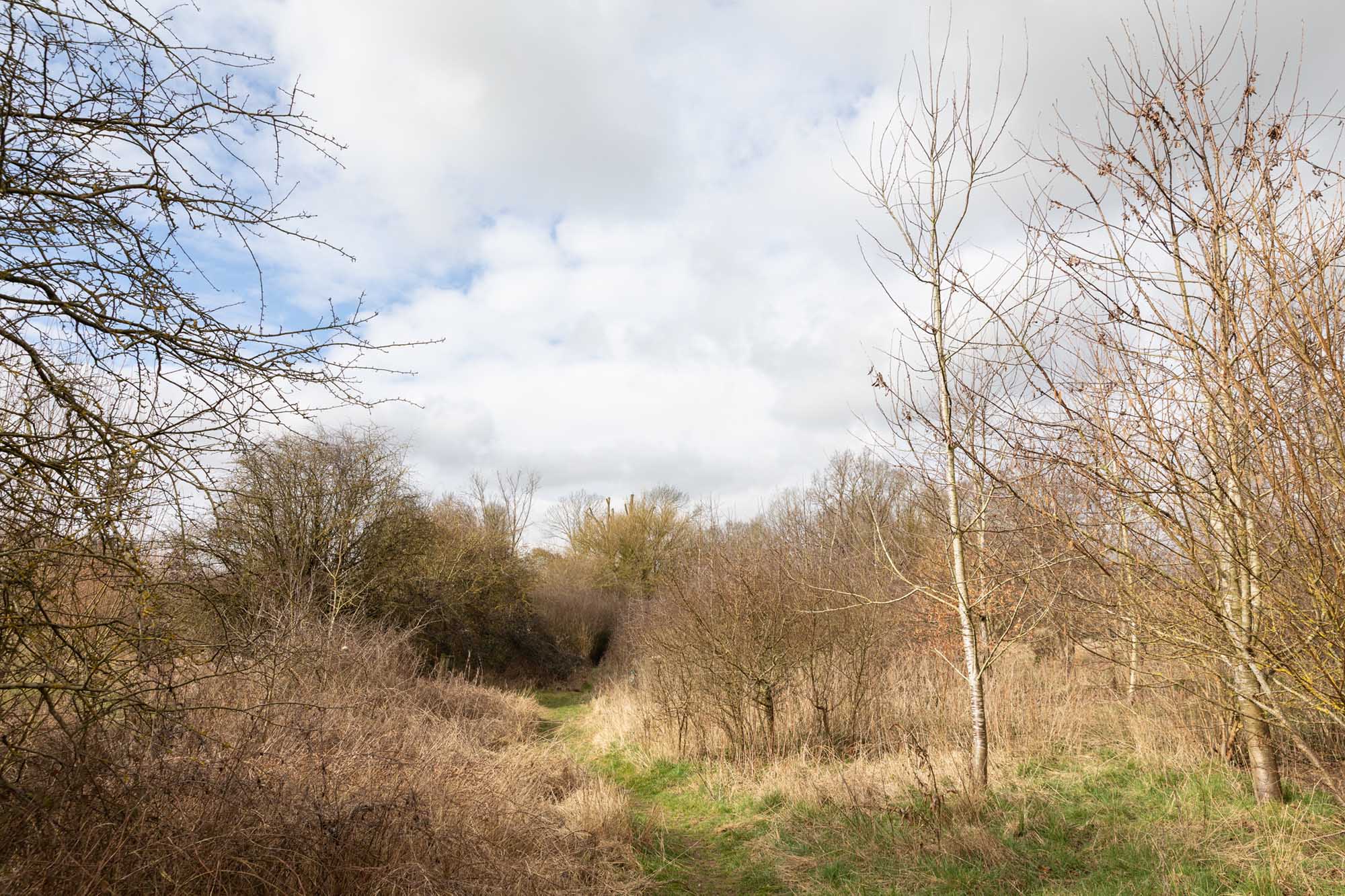
Just 30 miles north across the Thames Estuary, in the dappled farmland of rural mid-Essex, lies the Wilderness Foundation: a charity for children and young people that, like Dandelion Time, aims to transform lives through nature. Both charities are grantees of the Leathersellers’ Foundation.
Jo Roberts is CEO of the Wilderness Foundation since 2004. South African by birth, when she first came to the charity – which has been running since 1976 – its focus was on sending young people on wilderness trails in South Africa.
For Jo, working with nature allows children and young people to experience connection with one another and the therapists, and see resilience modelled in real time. “In nature-based work, we’re all experiencing the same thing,” she says. “If the wind is howling and they are freezing in the cold, so are we. The ‘them and us’ tends to disappear in our work, and we’re just role-modelling and showing how we regulate alongside them, and that seems to have a big effect on them, because it’s balanced, it’s equal.”
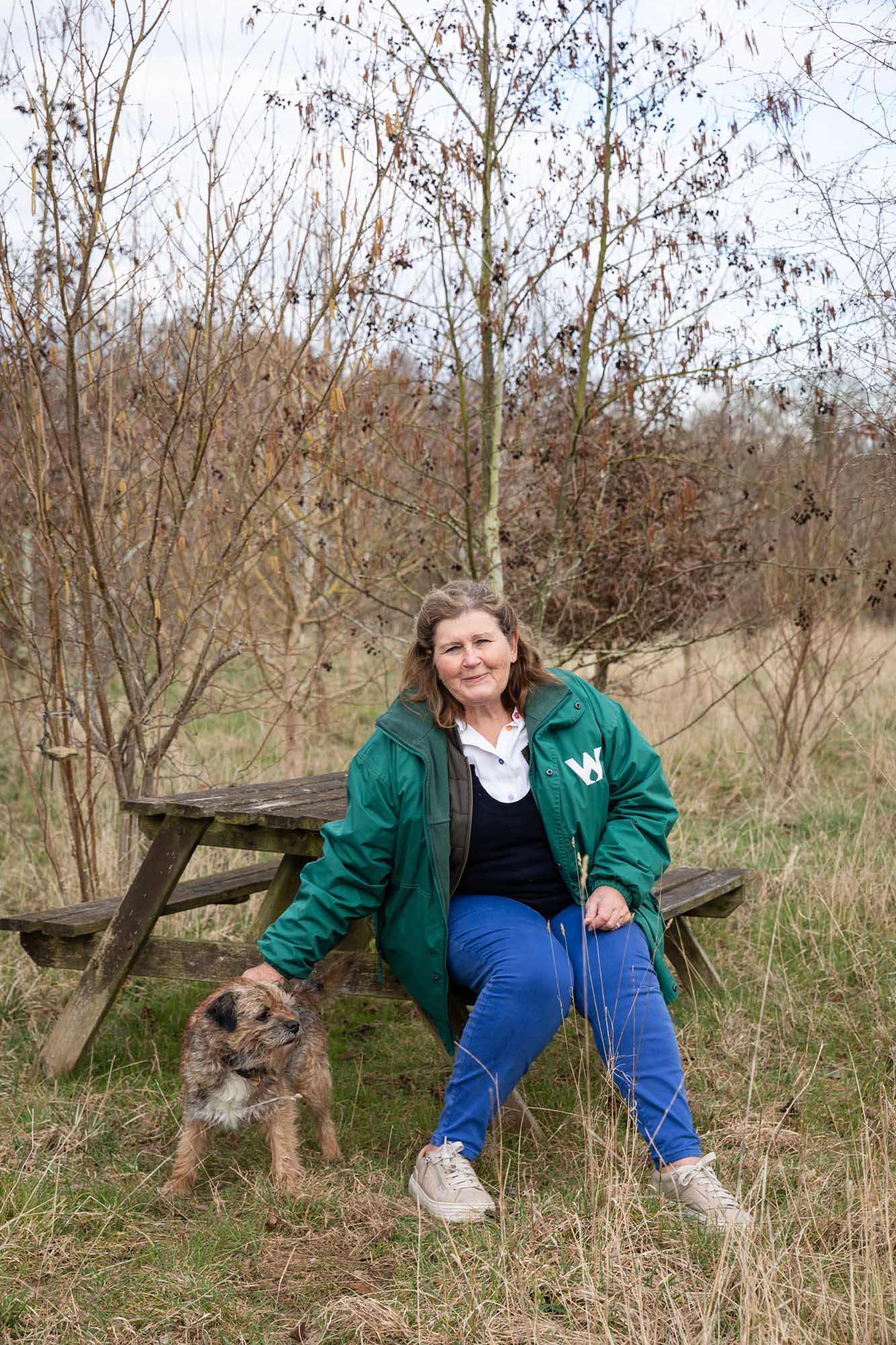 Jo Roberts
Jo Roberts
Consequently, being in nature helps young people experience things for themselves, and takes some of the pressure off practitioners to have all the answers. Jo echoes Graham’s thoughts about how being outdoors is therapeutic all on its own, and how it ‘works’ alongside the therapists. “Nature does most of the work, we’re just doing the facilitation within it,” she jokes. “It’s teamwork.”
These days, its mission is much closer to home. It provides three main strands for service users: connection with nature, environmental education, and therapy. It offers long-term interventions, such as the nine-month ‘Turnaround’ programme, to children and young people, on which 83% of attendees said their happiness, self-confidence and self-acceptance improved.
Through programmes like Turnaround, Wilderness helps people like Jed. Now 18, Jed first visited Wilderness in 2021 when he was just 14.
“Before I started, I didn’t know what to expect, because I’ve never been to this kind of environment before,” he says. “I get nervous in new surroundings and meeting new people, and I remember being nervous when I first came. I also found it hard to open up and talk to people but after a few weeks I found it easy to talk to Jo. She had a way of getting into my head, in a good way, and getting me to say what’s bothering me.”
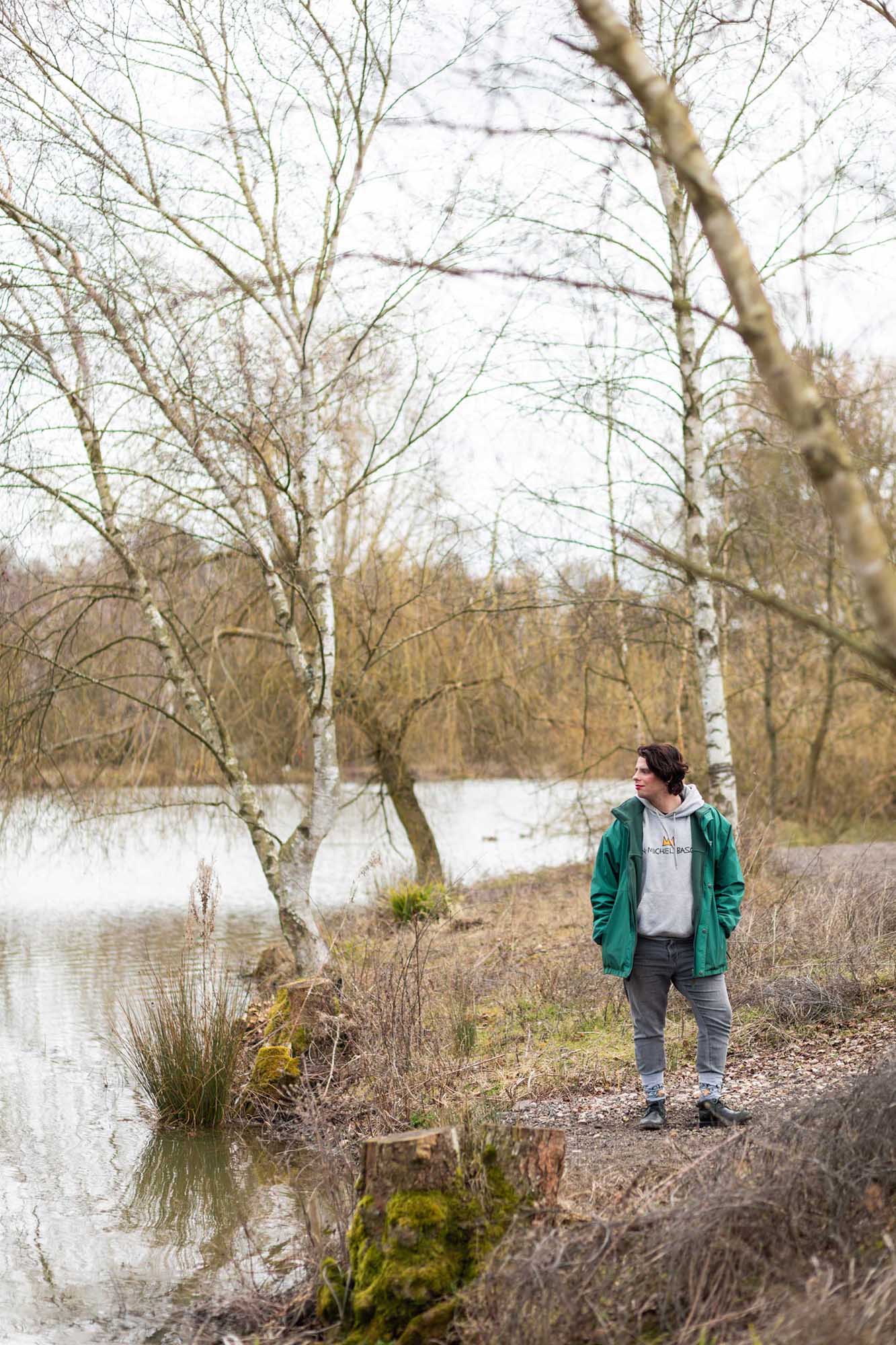 Jed at Wilderness Foundation
Jed at Wilderness Foundation
At the time, Jed was feeling overwhelmed with a number of issues: the end of his parents’ relationship, his father leaving the family home, the experience of coming out to friends and family, and the end of his first serious relationship. He was engaging in risky behaviour, and harming himself; he also attempted suicide. He joined one of the charity’s programmes for support.
Being in groups and being outdoors both had a positive impact on Jed, and led to new interests. “I have good memories of making a bonfire in the woods during the programme,” he says. “In the last four years I’ve really enjoyed exploring nature photography, I find it calming.” Wilderness has also provided a few moments of fun: Jed says he particularly treasures the time they went camping in rural Wales and woke up to sheep in the tent – and Jo having to run to the farmer’s house in her pyjamas to sort it out.
Life has changed for Jed since Turnaround. He is adopted, and since joining his first programme, has made contact with his biological sister, brothers and mum. He’s also engaged now.
During our interview, Jo is adamant that nature therapy is for everyone, although inequalities in access to green space were thrown into sharp relief during Covid-19 lockdowns in 2020-2021. “Covid-19 forced the Wilderness Foundation into being much more flexible,” she says. “Before, we said that we were ‘disconnecting to reconnect’: meaning, disconnecting technology to reconnect with others, ourselves and nature.”
“But during the pandemic we had a duty of care to try and reach as many people as we can who are in crisis. So, I supervised and trained therapists to bring nature into the therapy room online: for example by collecting little bits from the garden, bringing in things that they could see out the window, or drawing – finding a way that nature could creep into the online therapy room.”
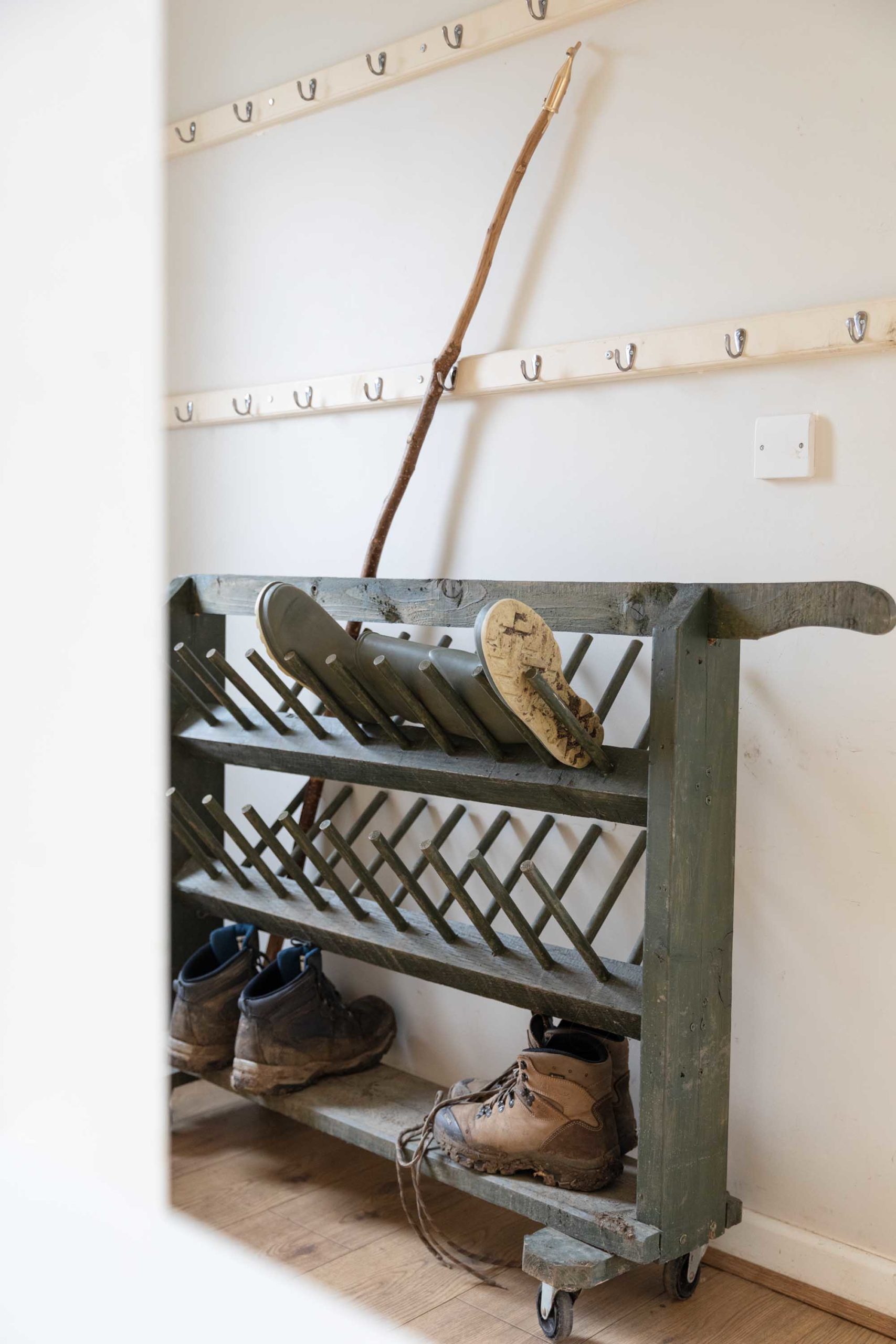
“Nature allows us to be more human: in nature, everybody becomes very human.”
The charity has volumes of local and national support for its mission. In 2023, Wilderness managed to raise the money to buy 92 acres of ancient woodland near its headquarters, completing its purchase last year. Wilderness and adventure are still key values, particularly in fundraising: also in 2023 Mark Agnew raised over £15,000 for the charity as part of his successful mission to kayak the Arctic Northwest Passage. The Wilderness Foundation sees around 8,000 participants per year.
Today, the shortage of child and adolescent mental health services continues to dominate the headlines. Young Minds found that the average wait for a young person after being referred to CAMHS was 392 days in 2023/2024, with 171,134 seeing their referral closed before getting support. In Scotland, journalists found that children in one area waited six years.
At the Wilderness Foundation, the rise in mental health problems that followed the pandemic, and the longer-term crisis in NHS child and adolescent mental health, is reflected in their own bottlenecks.
“Our waiting lists are through the roof,” Jo says. “Turnaround has about 60 people on the waiting list, and we’re only going to take 10. For another programme there’s around 100 people waiting. We have built a really good reputation, which I say with huge pride. But while our reputation has really grown, that comes with a dilemma for us because we are oversubscribed for what we can actually deliver.”
Working in nature keeps her grounded, she says. At the end of our conversation I ask Jo if there’s anything we forgot to talk about. “I think it’s the humanity that comes through our work,” she says. “Nature allows us to be more human: in nature, everybody becomes very human. Without anybody being aware of it, nature is doing the work around us all the time.”
READ MORE
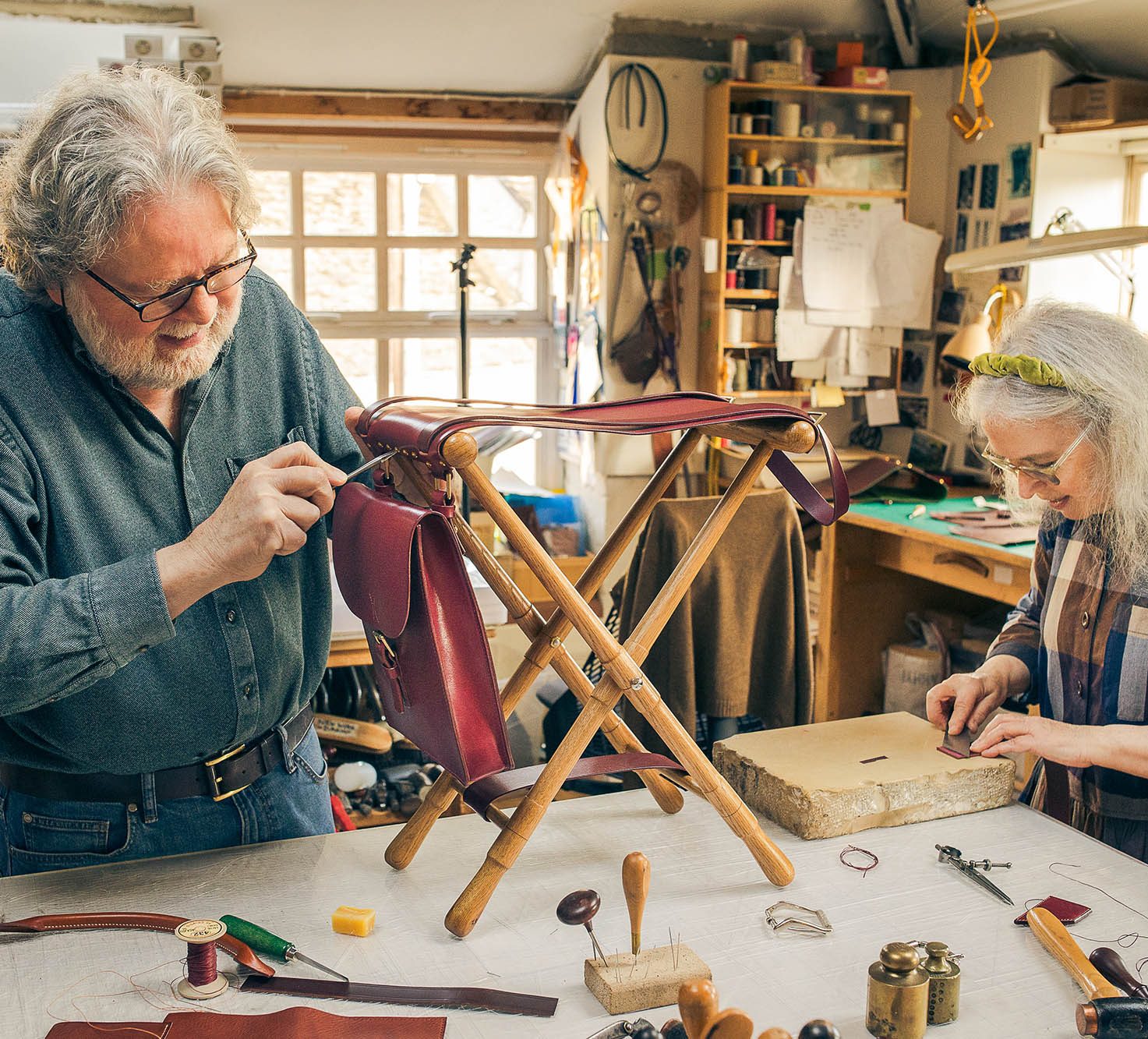
The Educators
Meet the leatherworkers helping to give the UK its competitive and creative edge by passing on traditional leather craft skills.
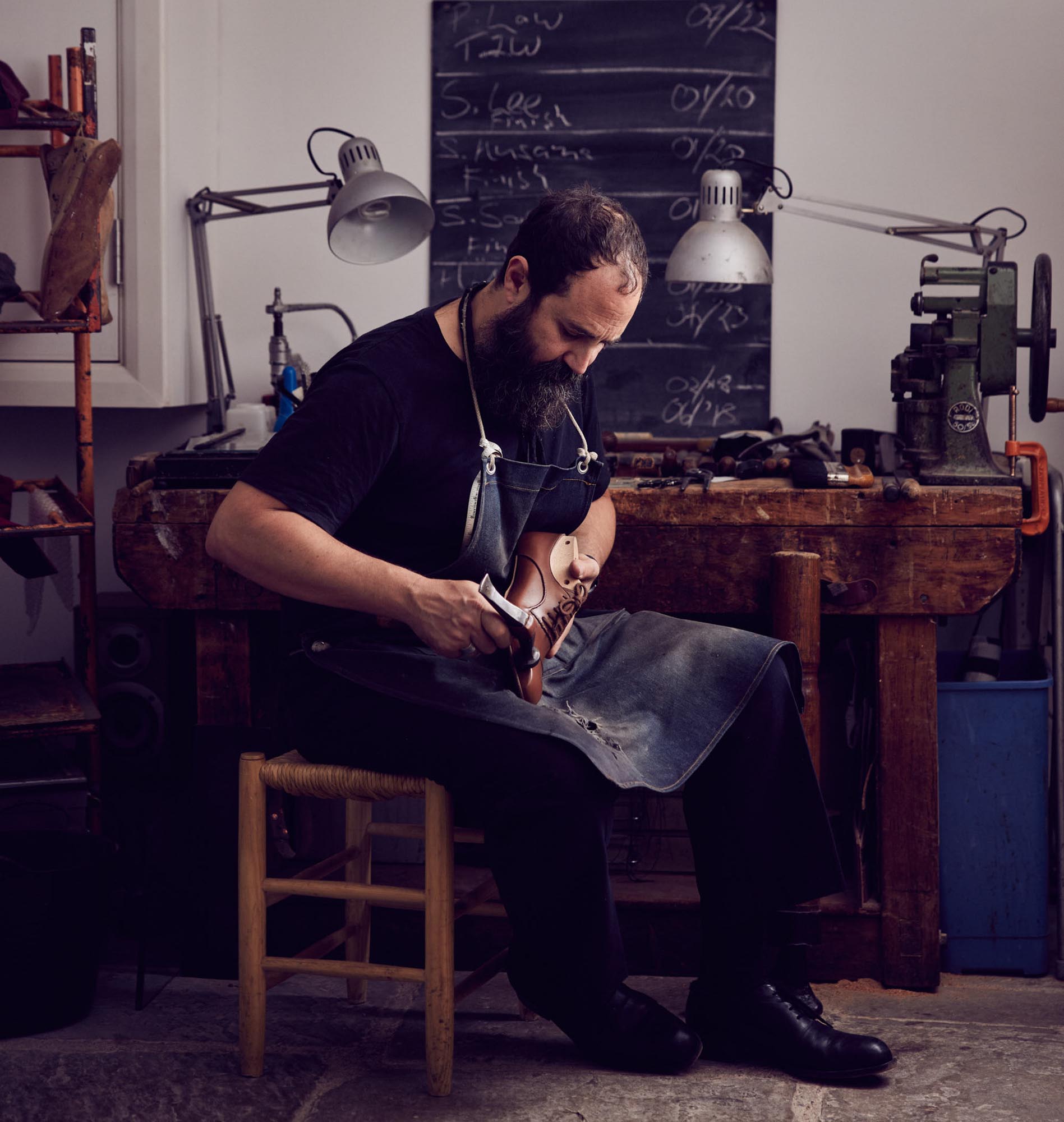
The Embers of Shoemaking in East London
East London shoemakers are rekindling embers of the area's historic craft. Elisa Anniss meets the artisans making it happen.

The Rich History of the Leather Trunk
Rory FH Smith charts the evolution of luggage and the role of leather - a story synonymous with changes in transportation.